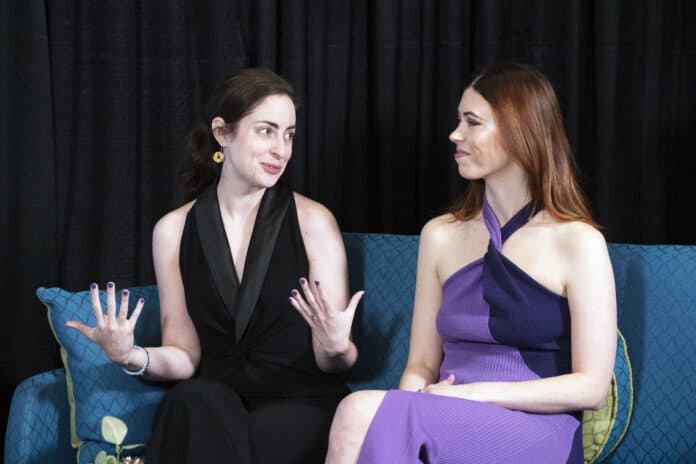
The narrative feature film “Him” had its premiere at the Sedona Performing Arts Center on Feb. 28 as part of the Sedona International Film Festival. “Him” was filmed at two private residences in Sedona, in the basement of the restaurant at Seven Canyons as well as at SPAC.
“The final five contestants on a reality dating show learn that their suitor — a man never seen or heard from in the film and referred to only as ‘him’ — hasn’t been entirely honest with them,” the film’s synopsis stated. “Over one fateful night, these former competitors must band together to assert their self-worth over both him and the show’s producers who manipulated them into falling in love.”
“[The premiere at SPAC] was really cool, it felt quite full circle,” screenwriter and actor Tess Higgins said. “We also shot it around this time last year, it was the last two weeks of January, and we got it done in a year, and this was just kind of the first festival opportunity that we had because of the way the timing worked out. It felt kind of poetic in a way and it was also the last day that we shot that scene … we ended there and we picked right back up there.”
Filmmakers choose to shoot in the red rocks for practical and artistic reasons, in the film, the show contestants are whisked away to a secluded upscale “villa.” — the film also began its life as a play.
“When Rebecca [Wahls] had the idea to turn it into a film, I was like, ‘The easiest thing to do would probably be to film it inside my parents’ house,’ so that’s what we did,” Higgins said. “The inside was my parents’ house. All the outdoor scenes were shot somewhere else at a different house that was donated to us.”
“We wanted them to be in as isolated of a place as possible,” director and screenwriter Wahls said. “We liked the idea of them being totally far away from society, not only digitally, because they don’t have their phones or access to their friends and family or news. We wanted them to be physically separated from [the outside world]. We wanted it to be somewhere where it was going to be hard to run away from; we can’t have them in Vancouver or [someplace] like that. They [couldn’t] walk down the street and knock on someone’s door.”
“We did really want to focus on these key types of players that producers sculpt on reality television,” Wahls said. “The biggest example of that is that the character of Shana, who [Higgins] plays, is who the producers of the show want to portray as the villain. Which is a relatively easy task for them to do, because she always says what’s on her mind, she has this background as a burlesque dancer, she has a risque past, she is sort of easy to provoke, it doesn’t take much for them to get her to start saying terrible things about the others. Which doesn’t mean she’s a terrible person, it means she’s in a high-stress situation, and she’s reacting exactly the way that they have designed her to react.”
Over the course of the movie, the viewer gets to see Shana as a more complex person.
“She does harbor these deep fears that she isn’t ever going to find the love of her life, which is why everyone is on the show in the first place,” Wahls said. “We didn’t want anyone in our story who was there for fame or to gain Instagram followers. Which is a big thing in all of these reality franchises lately. Who’s there for the right reasons versus who is there because they want to get sponsorship deals. We wanted all of our girls to be there for the right reasons, which is that they feel this missing part of their life, which is the absence of a life partner that they think that they might be able to fill on national television.”
Higgins is quick to point out that she is as complicit as everyone else in the negative parts of reality television and views the genre as often having the same cultural role as professional sports, in that it serves as a cultural commonality for its viewers.
“My main critique of it is that oftentimes a lot of reality shows focus on creating misery for their contestants, instead of letting drama play out naturally,” Higgins said. “That all starts with how they treat the contestants. You can always tell when a show is treating their contestants well.
“The ‘Golden Bachelor’ was a great example of [treating their contestants well], it was all older women in their 60s. They all looked like they werehaving the time of their lives, [but] there’s natural drama, because you’re all dating the same person … But you could tell the difference in how the producers were shaping the narrative of that show verses about five seasons of ‘The Bachelor’ ago when one of the guys tried to literally do what happened in our film [and] tried to leave, but he didn’t have his phone or his password.
“And he jumped over a fence in Portugal and was running off into the countryside because he was so upset at the leadership on the show, and that’s not fun … It’s on us to realize that and be a conscious consumer of the media that we enjoy. We can still like junk food and we can still eat it. But we should know that it’s bad for us.”





















